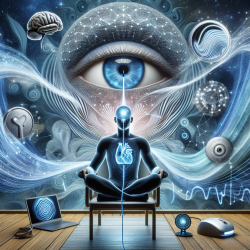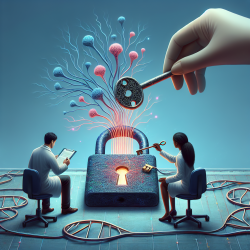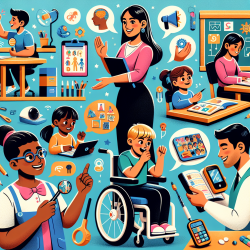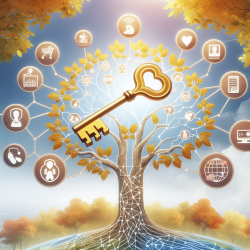As practitioners in the field of special education, we are constantly on the lookout for innovative approaches to improve our therapeutic methods and outcomes. The recent research article, "Eye movement desensitization and reprocessing: Exploratory validation study of the potential of a biofeedback digitized approach for burnout therapy optimization," offers a groundbreaking perspective on how we can leverage technology to enhance EMDR therapy for burnout. This blog aims to provide you with insights on how to implement these findings in your practice and encourage further exploration of this promising field.
Understanding the Research
The study conducted by Maçorano et al. (2021) explores the integration of a smartphone-based biofeedback digitized approach with EMDR therapy. This approach aims to provide quantitative progress assessments and personalized therapy optimization for burnout treatment. The research focuses on the development and testing of an EMDR app that uses adjustable audiovisual stimuli and biofeedback mechanisms, such as heart rate variability and breathing rate, to enhance therapy efficacy.
Key Findings
- Quantitative Progress Assessment: The app provides objective data on therapy progress, moving beyond subjective assessments by the patient and therapist.
- Personalized Therapy Optimization: The biofeedback mechanisms allow for real-time adjustments to stimuli, making therapy sessions more tailored to individual needs.
- Usability and Receptivity: Preliminary interviews with EMDR experts indicate a high level of receptivity and interest in the app's potential as a therapeutic tool.
Practical Applications for Practitioners
Implementing the outcomes of this research can significantly enhance your therapeutic practice. Here are some steps to get started:
- Adopt the App: Incorporate the EMDR app into your therapy sessions to provide a more objective and personalized treatment experience.
- Training and Familiarization: Attend webinars, conferences, and training sessions to become proficient in using biofeedback and digital therapy tools.
- Monitor and Adjust: Use the app's data to monitor therapy progress and make necessary adjustments to stimuli for optimal outcomes.
- Stay Updated: Keep abreast of the latest research and technological advancements in digital therapy to continually refine your practice.
Encouraging Further Research
While the initial findings are promising, further research is essential to fully validate the efficacy of this digitized approach. As practitioners, you can contribute to this growing body of knowledge by:
- Participating in Studies: Engage in clinical trials and research studies to provide valuable data and feedback.
- Collaborating with Researchers: Partner with academic institutions and tech companies to explore new applications and improvements.
- Publishing Case Studies: Share your experiences and outcomes in professional journals and at conferences to inform and inspire your peers.
In conclusion, the integration of biofeedback and digital tools with EMDR therapy presents an exciting opportunity to revolutionize burnout treatment. By embracing these innovations, we can offer more effective, personalized, and scalable therapeutic solutions to our clients.
To read the original research paper, please follow this link: Eye movement desensitization and reprocessing: Exploratory validation study of the potential of a biofeedback digitized approach for burnout therapy optimization.










